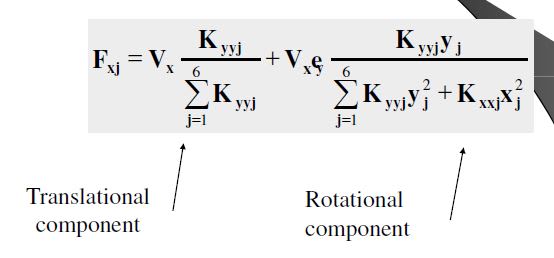Question 1:
For a building with concrete shear walls and steel bracing frames. How do we distribute the seismic loads between the shear walls and steel frames? I found some notes for the distribution of forces to individual elements:

I have asked some other engineers and some suggestions include:
A. Apply a unit force to the elements and this will determine the relative stiffness for the "K" variable.
B. Treat all the elements as concrete shear walls and then design the steel frames for the distributed forces.
Question 2:
When distributing lateral forces to a building with only concrete shear walls acting as the LLRS, the procedure involves determining the individual stiffness of each wall, i.e. BD^3/12. But this method seems to neglect the level of steel reinforcement within each wall? If a shear wall is more relatively reinforced, would it not be stiffer and attract more load?
Thank you in advance.
For a building with concrete shear walls and steel bracing frames. How do we distribute the seismic loads between the shear walls and steel frames? I found some notes for the distribution of forces to individual elements:

I have asked some other engineers and some suggestions include:
A. Apply a unit force to the elements and this will determine the relative stiffness for the "K" variable.
B. Treat all the elements as concrete shear walls and then design the steel frames for the distributed forces.
Question 2:
When distributing lateral forces to a building with only concrete shear walls acting as the LLRS, the procedure involves determining the individual stiffness of each wall, i.e. BD^3/12. But this method seems to neglect the level of steel reinforcement within each wall? If a shear wall is more relatively reinforced, would it not be stiffer and attract more load?
Thank you in advance.
